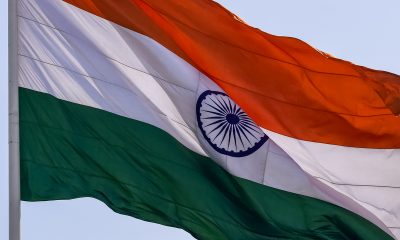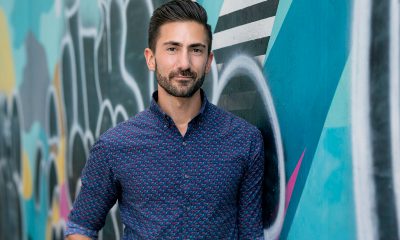National
SPECIAL REPORT: Poverty in the LGBT community
Studies show image of ‘gay affluence’ is a myth

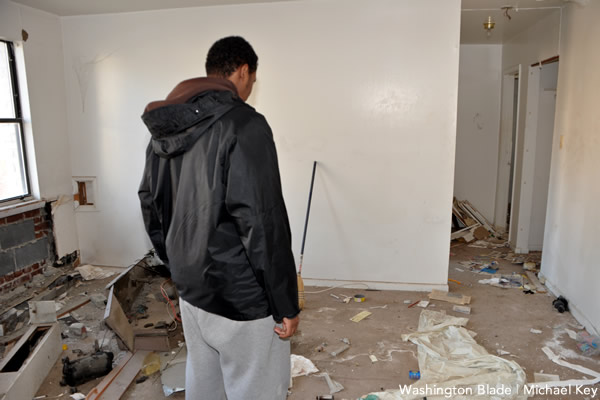
Kadeem Swenson told the Blade in 2010 that his parents kicked him out of the house for being gay. He spent a year living in abandoned buildings in D.C. (Washington Blade photo by Michael Key)
Editor’s note: This week, the Blade kicks off a special yearlong focus on poverty in the LGBT community. The occasional series will examine the problem with special reports from D.C. and around the country. To share your ideas or personal story, visit us on Facebook or email [email protected].
As the 50th anniversary of the U.S. war on poverty launched by President Lyndon B. Johnson in 1964 is commemorated this year, LGBT advocates are pointing to little noticed studies showing that the rate of poverty in the LGBT community is higher than that of the general population.
In a 2013 report analyzing data from the U.S. Census Bureau and other data measuring poverty in the United States, the Williams Institute, a research arm at the University of California Law School in Los Angeles that specializes in LGBT issues, concludes that rates of poverty are higher than the general population among gay men and lesbians between the ages of 18-44 and gay men and lesbians living alone.
The report shows that couples – both gay and straight – tend to have a lower rate of poverty than single people and the population as a whole. But it found that the poverty rate for lesbian couples is higher than that of gay male couples and opposite-sex couples and the poverty rate of same-sex African-American couples is higher than it is for opposite-sex African-American couples.
Among the report’s findings that surprised LGBT activists were data showing that bisexual men and women had poverty rates of 25.9 percent and 29.4 percent respectively – higher than gay men (20.5 percent) and lesbians (22.7 percent). The report says the same set of data show that heterosexual men had a poverty rate of 15.3 percent compared to a rate of 21.1 percent for heterosexual women.
“The LGB poverty data help to debunk the persistent stereotype of the affluent gay man or lesbian,” the Williams Institute report says.
“Instead, the poverty data are consistent with the view that LGB people continue to face economic challenges that affect their income and life chances, such as susceptibility to employment discrimination, higher rates of being uninsured, and a lack of access to various tax and other financial benefits via exclusion from the right to marry,” the report says.
The report uses the U.S. Census Bureau definition of poverty for 2012 in its analysis of LGBT poverty levels based on family income. That definition lists the “poverty line” for a single person household as an annual income of $11,815 or less. The poverty line for a two-person household was $15,079, and for a four-person household was $23,684 in 2012.
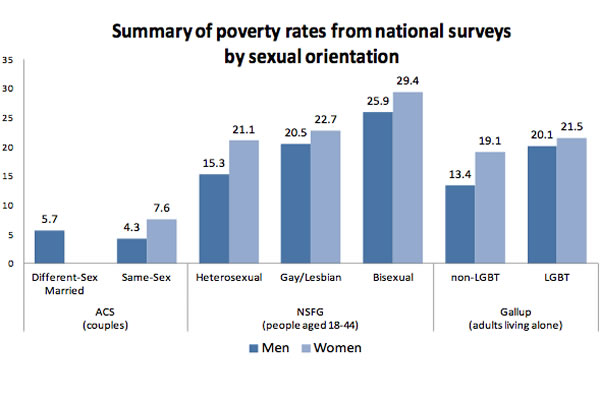
Researchers with the Williams Institute say this graph summarizes their findings of higher poverty rates among samples of mostly LGB and some LGBT people in the U.S. The bar graph on the left represents data taken from the U.S. Census Bureau’s 2010 American Community Survey (ACS). The chart in the center is taken from data from the U.S. Center for Disease Control and Prevention’s 2010 National Survey of Family Growth (NSFG). The chart at right is from a 2012 phone survey conducted by the Gallup Poll organization. (Graph courtesy of the Williams Institute)
Trans poverty ‘extraordinarily high’
A separate study prepared jointly by the National Center for Transgender Equality and the National Gay and Lesbian Task Force in 2011, called “Injustice at Every Turn,” shows dramatically higher rates of poverty and homelessness among transgender Americans in each state, the District of Columbia and U.S. territories.
Kylar Broadus, senior policy counsel and director of the Trans Civil Rights Project for The Task Force, called the poverty rate in the transgender community “extraordinarily high.” He said a key factor leading to economic hardship among transgender people is the persistent problem of employment discrimination.
“There’s double the national rate of unemployment,” he said in discussing the trans community of which he said he’s a member. “And once we’re employed 90 percent of those surveyed reported experiencing harassment and discrimination on the job,” he noted in pointing to the NCTE-Task Force study.
“Forty-seven percent said they experienced adverse outcomes such as being fired, not hired or denied promotions because of being transgender or gender non-conforming,” Broadus said.
He said the respondents reported various forms of housing discrimination that are contributing factors to homelessness in the transgender community. According to the study, 19 percent of respondents reported having been refused a home or an apartment to rent and 11 percent reported being evicted because of their gender identity or expression.
“Nineteen percent experienced homelessness at some point in their lives because they were transgender or didn’t conform as well, and then 55 percent were denied access to shelters,” he said.
Another study released by the Williams Institute last week reports that 2.4 million LGBT adults, or 29 percent, “experienced a time in the last year when they did not have enough money to feed themselves or their family.”
The study, written by Williams Institute demographer Gary Gates, found that LGBT people are more likely to rely on the federal food stamp program for assistance than their heterosexual counterparts.
“One in four bisexuals (25 percent) receive food stamps,” the report says, “34 percent of LGBT women were food insecure in the last year; and LGBT African Americans, Native Americans, and Native Hawaiians experienced food insecurity in the last year at rates of 37 percent, 55 percent, and 78 percent respectively,” the report says.
LGBT homeless rate high in San Fran
Yet another report released last June found that 29 percent of the homeless population in San Francisco identified as LGBT. The report, which was part of the city’s biennial homeless count, included for the first time a count of the number of homeless people who identified themselves as gay, lesbian, bisexual or transgender, according to the San Francisco Chronicle.
Brian Bassinger, director of the San Francisco-based AIDS Housing Alliance, which provides services to the HIV and LGBT communities, said although the finding to some degree reflects the high LGBT population in San Francisco, which is 15 percent, he believes LGBT people make up a sizable percent of the homeless population in other cities throughout the country.
Bassinger said he also believes the 29 percent figure for San Francisco is most likely an under count and that the actual number is higher.
“LGBT people in the shelter system here are regularly targeted for violence, harassment and hate crimes, which are very well documented,” he said.
Since much of the effort to count homeless people in the city takes place at shelters, large numbers of LGBT homeless people are not counted because they generally avoid the shelters out of fear of harassment and violence, Bassinger said.
He said his group also closely monitors a development in San Francisco threatening to push the city’s older LGBT population into poverty and which may be occurring in other cities – the enormous rise in the cost of housing due to gentrification and a booming real estate market. Those who for years have lived in popular gay neighborhoods as tenants are being displaced by the conversion of rental apartment buildings and houses into upscale condominiums, Bassinger said.
“Long-term San Franciscans who have spent decades building the system to deliver access to equal treatment under the law here in San Francisco are getting displaced by all of these people moving into our community,” he said.
And because they can no longer afford to live in San Francisco many are being forced to move to other parts of the state or other states that are less LGBT friendly and don’t have the support community they came to enjoy for so many years, according to Bassinger.
The Williams Institute’s 2013 report, meanwhile, analyzes data from four surveys of the U.S. population with a demographic breakdown that included mostly gay men, lesbians, and bisexuals as well as a smaller, combined “LGBT” sample.
The four surveys were conducted by these organizations or government agencies:
• The 2010 American Community Survey conducted by the U.S. Census Bureau with a sample of more than 500,000 and which included data from same-sex couple households.
• The National Survey of Family Growth conducted by the U.S. Centers for Disease Control and Prevention’s National Center for Health Statistics from 2006-2010 included a sample of more than 19,000 people throughout the country, including people who identified as LGB, the Williams Institute study says.
• The California Health Interview Survey conducted by UCLA’s Center for Health Policy Research in collaboration with California Department of Public Health surveyed more than 50,000 Californians, including LGB adults from 2007 to 2009.
• A Gallup Daily Tracking Poll conducted between June 1 and Sept. 30, 2012 with a sample of more than 120,000 adults from 18 and older, included people who identified themselves as LGBT in all 50 states and D.C. The poll was conducted by phone.
The report includes these additional findings on the subject of poverty in the LGBT community:
• African-American same-sex couples have poverty rates more than twice the rate of different-sex married African Americans.
• One-third of lesbian couples and 20.1 percent of gay male couples who don’t have a high school diploma are in poverty, compared to 18.8 percent of heterosexual couples.
• Lesbian couples living in rural areas are more likely to be poor (14.1 percent) compared to 4.5 percent of lesbian couples in large cities; 10.2 percent of gay male couples who live in small metropolitan areas are poor compared with just 3.3 percent of gay male couples who live in large metropolitan areas.
• Nearly one in four children living with a male same-sex couple and 19.2 percent of children living with a female same-sex couple is in poverty. This compares with 12.1 percent of children living with married heterosexual couples who are in poverty.
• African-American children in gay male households have the highest poverty rate (52.3 percent) of any children in any household type.
• 14 percent of lesbian couples and 7.7 percent of gay male couples received food stamps, compared to 6.5 percent of straight married couples. In addition, 2.2 percent of same-sex female couples received government cash assistance compared to 0.8 percent of women in different-sex couples. And 1.2 percent of men in same-sex couples received cash assistance compared to 0.6 percent of men in different-sex couple relationships who received cash assistance.
The report’s co-author Lee Badgett, a Williams Institute senior fellow and professor at the University of Massachusetts at Amherst, said it’s difficult to draw a conclusion from the Williams Institute and other studies as to why there are higher poverty levels in the LGBT community.
“The people that I know who worked with LGBT people in poverty talk about the reasons being very complex,” she said.
“I suspect that there are lots of disadvantages that people face, whether it’s in the labor market or in schools and that maybe somehow they kind of come together, that they are sort of cumulative over time and make people more vulnerable to poverty. But I think we don’t really know exactly why that happens,” Badgett told the Blade.
In the Williams Institute report, she and co-authors Laura Durso and Alyssa Schneebaum call for further studies to explore the factors that contribute both to “poverty and economic resilience” within the LGBT community.
“Our analyses highlight different demographic subpopulations that may be particularly at-risk; however, we are unable to take a more fine-grained approach to identifying factors that contribute to poverty in these different communities,” the report says.
“Identifying the conditions under which individuals and families descend into and escape from poverty will aid service organizations and government agencies in designing interventions to address this significant social problem,” the report concludes.
Broadus of the Task Force said discrimination and bias make up at least some of the conditions that force LGBT people into poverty.
“We are less economically secure as a community due to suffering at the hands of discrimination in employment, marriage, insurance and less familial and societal support,” he said. “The LGBT community as a whole lives at the margins and some at the margins of the margins such as women, people of color and children. When some of our community is vulnerable we are all vulnerable.”
Federal Government
Treasury Department has a gay secretary but LGBTQ staff are under siege
Agency reverses course on LGBTQ inclusion under out Secretary Scott Bessent

A former Treasury Department employee who led the agency’s LGBTQ employee resource group says the removal of sexual orientation and gender identity (SOGI) from its discrimination complaint forms was merely a formalization of existing policy shifts that had already taken hold following the second inauguration of President Donald Trump and his appointment of Scott Bessent — who is gay — to lead the agency.
Christen Boas Hayes, who served on the policy team at Treasury’s Financial Crimes Enforcement Network (FinCEN) from 2020 until March of this year, told the Washington Blade during a phone interview last week that the agency had already stopped processing internal Equal Employment Opportunity (EEO) complaints on the basis of anti-LGBTQ discrimination.
“So the way that the forms are changing is a procedural recognition of something that’s already happening,” said Hayes. “Internally, from speaking to two EEO staff members, the changes are already taking place from an EEO perspective on what kind of cases will be found to have the basis for a complaint.”
The move, they said, comes amid the deterioration of support structures for LGBTQ workers at the agency since the administration’s early rollout of anti-LGBTQ executive orders, which led to “a trickle down effect of how each agency implements those and on what timeline,” decisions “typically made by the assistant secretary of management’s office and then implemented by the appropriate offices.”
At the end of June, a group of U.S. House Democrats including several out LGBTQ members raised alarms after a Federal Register notice disclosed Treasury’s plans to revise its complaint procedures. Through the agency’s Office of Civil Rights and EEO, the agency would eliminate SOGI as protected categories on the forms used by employees to initiate claims of workplace discrimination.
But Hayes’s account reveals that the paperwork change followed months of internal practice, pursuant to a wave of layoffs targeting DEI personnel and a chilling effect on LGBTQ organizing, including through ERGs.
Hayes joined Treasury’s FinCEN in 2020 as the agency transitioned into the Biden-Harris administration, working primarily on cryptocurrency regulation and emerging technologies until they accepted a “deferred resignation” offer, which was extended to civil servants this year amid drastic staffing cuts.
“It was two things,” Hayes said. “One was the fact that the policy work that I was very excited about doing was going to change in nature significantly. The second part was that the environment for LGBTQ staff members was increasingly negative after the release of the executive orders,” especially for trans and nonbinary or gender diverse employees.
“At the same time,” Hayes added, “having been on the job for four years, I also knew this year was the year that I would leave Treasury. I was a good candidate for [deferred resignation], because I was already planning on leaving, but the pressures that emerged following the change in administration really pushed me to accelerate that timeline.”
Some ERGs die by formal edict, others by a thousand cuts
Hayes became involved with the Treasury LGBTQ ERG shortly after joining the agency in 2020, when they reached out to the group’s then-president — “who also recently took the deferred resignation.”
“She said that because of the pressure that ERGs had faced under the first Trump administration, the group was rebuilding, and I became the president of the group pretty quickly,” Hayes said. “Those pressures have increased in the second Trump administration.”
One of the previous ERG board members had left the agency after encountering what Hayes described as “explicitly transphobic” treatment from supervisors during his gender transition. “His supervisors denied him a promotion,” and, “importantly, he did not have faith in the EEO complaint process” to see the issues with discrimination resolved, Hayes said. “And so he decided to just leave, which was, of course, such a loss for Treasury and our Employee Resource Group and all of our employees at Treasury.”
The umbrella LGBTQ ERG that Hayes led included hundreds of members across the agency, they said, and was complemented by smaller ERGs at sub-agencies like the IRS and FinCEN — several of which, Hayes said, were explicitly told to cease operations under the new administration.
Hayes did not receive any formal directive to shutter Treasury’s ERG, but described an “implicit” messaging campaign meant to shut down the group’s activities without issuing anything in writing.
“The suggestion was to stop emailing about anything related to the employee resource group, to have meetings outside of work hours, to meet off of Treasury’s campus, and things like that,” they said. “So obviously that contributes to essentially not existing functionally. Because whereas we could have previously emailed our members comfortably to announce a happy hour or a training or something like that, now they have to text each other personally to gather, which essentially makes it a defunct group.”
Internal directories scrubbed, gender-neutral restrooms removed
Hayes said the dismantling of DEI staff began almost immediately after the executive orders. Employees whose position descriptions included the terms “diversity, equity, and inclusion” were “on the chopping block,” they said. “That may differ from more statutorily mandated positions in the OMWI office or the EEO office.”
With those staff gone, so went the infrastructure that enabled ERG programming and community-building. “The people that made our employee resource group events possible were DEI staff that were fired. And so, it created an immediate chilling effect on our employee resource group, and it also, of course, put fear into a lot of our members’ hearts over whether or not we would be able to continue gathering as a community or supporting employees in a more practical way going forward. And it was just, really — it was really sad.”
Hayes described efforts to erase the ERGs from internal communication channels and databases. “They also took our information off internal websites so nobody could find us as lawyers went through the agency’s internal systems to scrub DEI language and programs,” they said.
Within a week, Hayes said, the administration had removed gender-neutral restrooms from Main Treasury, removed third-gender markers from internal databases and forms, and made it more difficult for employees with nonbinary IDs to access government buildings.
“[They] made it challenging for people with X gender markers on identification documents to access Treasury or the White House by not recognizing their gender marker on the TWAVES and WAVES forms.”
LGBTQ staff lack support and work amid a climate of isolation
The changes have left many LGBTQ staff feeling vulnerable — not only because of diminished workplace inclusion, but due to concerns about job security amid the administration’s reductions in force (RIFs).
“Plenty of people are feeling very stressed, not only about retaining their jobs because of the layoffs and pending questions around RIFs, but then also wondering if they will be included in RIF lists because they’re being penalized somehow for being out at work,” Hayes said. “People wonder if their name will be given, not because they’re in a tranche of billets being laid off, but because of their gender identity or sexual orientation.”
In the absence of functional ERGs, Hayes said, LGBTQ employees have been cut off from even informal networks of support.
“Employees [are] feeling like it’s harder to find members of their own community because there’s no email anymore to ask when the next event is or to ask about navigating healthcare or other questions,” they said. “If there is no ERG to go to to ask for support for their specific issue, that contributes to isolation, which contributes to a worse work environment.”
Hayes said they had not interacted directly with Secretary Bessent, but they and others observed a shift from the previous administration. “It is stark to see that our first ‘out’ secretary did not host a Pride event this year,” they said. “For the last three years we’ve flown the rainbow Pride flag above Treasury during Pride. And it was such a celebration among staff and Secretary Yellen and the executive secretary’s office were super supportive.”
“Employees notice changes like that,” they added. “Things like the fact that the Secretary’s official bio says ‘spouse’ instead of ‘husband.’ It makes employees wonder if they too should be fearful of being their full selves at work.”
The Blade contacted the Treasury Department with a request for comment outlining Hayes’s allegations, including the removal of inclusive infrastructure, the discouragement of ERG activity, the pre-formalization of EEO policy changes, and the targeting of DEI personnel. As of publication, the agency has not responded.
U.S. Supreme Court
Supreme Court to consider bans on trans athletes in school sports
27 states have passed laws limiting participation in athletics programs
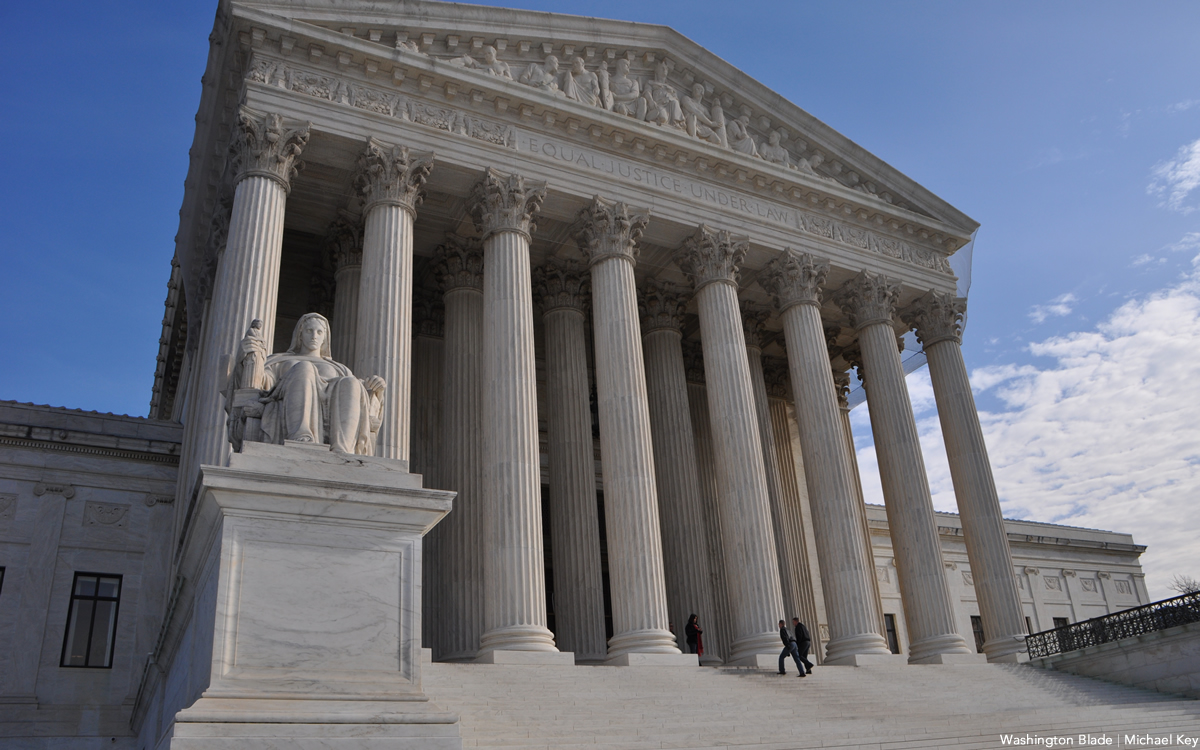
The U.S. Supreme Court on Thursday agreed to hear two cases involving transgender youth challenging bans prohibiting them from participating in school sports.
In Little v. Hecox, plaintiffs represented by the ACLU, Legal Voice, and the law firm Cooley are challenging Idaho’s 2020 ban, which requires sex testing to adjudicate questions of an athlete’s eligibility.
The 9th U.S. Circuit Court of Appeals described the process in a 2023 decision halting the policy’s enforcement pending an outcome in the litigation. The “sex dispute verification process, whereby any individual can ‘dispute’ the sex of any female student athlete in the state of Idaho,” the court wrote, would “require her to undergo intrusive medical procedures to verify her sex, including gynecological exams.”
In West Virginia v. B.P.J., Lambda Legal, the ACLU, the ACLU of West Virginia, and Cooley are representing a trans middle school student challenging the Mountain State’s 2021 ban on trans athletes.
The plaintiff was participating in cross country when the law was passed, taking puberty blockers that would have significantly reduced the chances that she could have a physiological advantage over cisgender peers.
“Like any other educational program, school athletic programs should be accessible for everyone regardless of their sex or transgender status,” said Joshua Block, senior counsel for the ACLU’s LGBTQ and HIV Project. “Trans kids play sports for the same reasons their peers do — to learn perseverance, dedication, teamwork, and to simply have fun with their friends,” Block said.
He added, “Categorically excluding kids from school sports just because they are transgender will only make our schools less safe and more hurtful places for all youth. We believe the lower courts were right to block these discriminatory laws, and we will continue to defend the freedom of all kids to play.”
“Our client just wants to play sports with her friends and peers,” said Lambda Legal Senior Counsel Tara Borelli. “Everyone understands the value of participating in team athletics, for fitness, leadership, socialization, and myriad other benefits.”
Borelli continued, “The U.S. Court of Appeals for the Fourth Circuit last April issued a thoughtful and thorough ruling allowing B.P.J. to continue participating in track events. That well-reasoned decision should stand the test of time, and we stand ready to defend it.”
Shortly after taking control of both legislative chambers, Republican members of Congress tried — unsuccessfully — to pass a national ban like those now enforced in 27 states since 2020.
Federal Government
UPenn erases Lia Thomas’s records as part of settlement with White House
University agreed to ban trans women from women’s sports teams

In a settlement with the Trump-Vance administration announced on Tuesday, the University of Pennsylvania will ban transgender athletes from competing and erase swimming records set by transgender former student Lia Thomas.
The U.S. Department of Education’s Office for Civil Rights found the university in violation of Title IX, the federal rights law barring sex based discrimination in educational institutions, by “permitting males to compete in women’s intercollegiate athletics and to occupy women-only intimate facilities.”
The statement issued by University of Pennsylvania President J. Larry Jameson highlighted how the law’s interpretation was changed substantially under President Donald Trump’s second term.
“The Department of Education OCR investigated the participation of one transgender athlete on the women’s swimming team three years ago, during the 2021-2022 swim season,” he wrote. “At that time, Penn was in compliance with NCAA eligibility rules and Title IX as then interpreted.”
Jameson continued, “Penn has always followed — and continues to follow — Title IX and the applicable policy of the NCAA regarding transgender athletes. NCAA eligibility rules changed in February 2025 with Executive Orders 14168 and 14201 and Penn will continue to adhere to these new rules.”
Writing that “we acknowledge that some student-athletes were disadvantaged by these rules” in place while Thomas was allowed to compete, the university president added, “We recognize this and will apologize to those who experienced a competitive disadvantage or experienced anxiety because of the policies in effect at the time.”
“Today’s resolution agreement with UPenn is yet another example of the Trump effect in action,” Education Secretary Linda McMahon said in a statement. “Thanks to the leadership of President Trump, UPenn has agreed both to apologize for its past Title IX violations and to ensure that women’s sports are protected at the university for future generations of female athletes.”
Under former President Joe Biden, the department’s Office of Civil Rights sought to protect against anti-LGBTQ discrimination in education, bringing investigations and enforcement actions in cases where school officials might, for example, require trans students to use restrooms and facilities consistent with their birth sex or fail to respond to peer harassment over their gender identity.
Much of the legal reasoning behind the Biden-Harris administration’s positions extended from the 2020 U.S. Supreme Court case Bostock v. Clayton County, which found that sex-based discrimination includes that which is based on sexual orientation or gender identity under Title VII rules covering employment practices.
The Trump-Vance administration last week put the state of California on notice that its trans athlete policies were, or once were, in violation of Title IX, which comes amid the ongoing battle with Maine over the same issue.
-
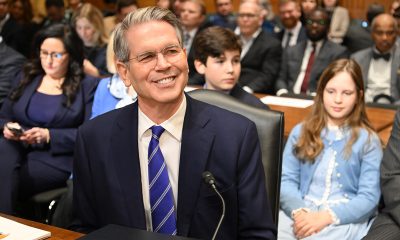
 Federal Government2 days ago
Federal Government2 days agoTreasury Department has a gay secretary but LGBTQ staff are under siege
-
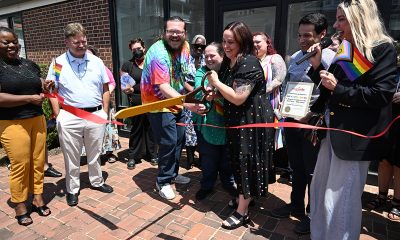
 Virginia3 days ago
Virginia3 days agoDefying trends, new LGBTQ center opens in rural Winchester, Va.
-
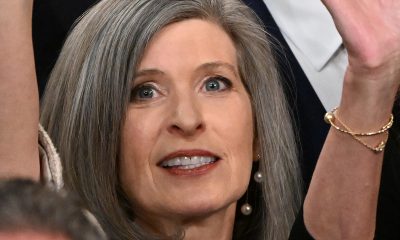
 District of Columbia2 days ago
District of Columbia2 days agoGay GOP group hosts Ernst, 3 House members — all of whom oppose Equality Act
-

 District of Columbia2 days ago
District of Columbia2 days agoD.C. police seek public’s help in July 5 murder of trans woman



